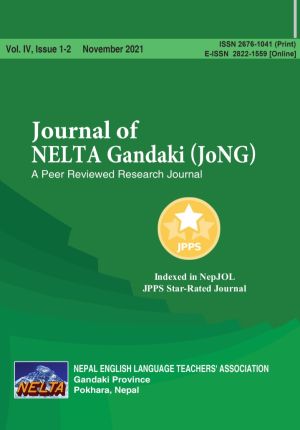Language in Education Policy in Local Governments: A Case of Rupandehi District
DOI:
https://doi.org/10.3126/jong.v4i1-2.42651Keywords:
EMI, language policy, local languages, multilingual education, policymakerAbstract
This paper analyses the position of languages in local education policy. The objectives of this paper were to explore the language in education policies in the local government of Nepal and to find the policymakers’ perception toward language in education policy in the local governments of Nepal. I prepared this paper in two ways; by reviewing the secondary documents in which I have gone through the relevant documents of language in the education policy of Nepal historically. It was a case study research design. For primary resources, I selected two local governments of the Rupandehi district as cases and reviewed their policies. For this study, I selected two policymakers of selected local governments of Rupandehi purposively who have been working in the area of local policy-making activity. I performed a depth interview with unstructured interviews based on the education and language policies they had prepared before. The findings of this study revealed that there was a gap between the policy and practice in relation to language in the education policy of local governments. Policies were formulated according to the spirit of the constitution of Nepal respecting all languages but there were lapses in practices focusing on English and Nepali Language. It was also found that policymakers were proactive to promote the local languages but negligence by the user and the policymakers were aware of addressing the linguistic diversity of their municipalities in education policy.
Downloads
Downloads
Published
How to Cite
Issue
Section
License
This license allows reusers to distribute, remix, adapt, and build upon the material in any medium or format for noncommercial purposes only, and only so long as attribution is given to the creator.




